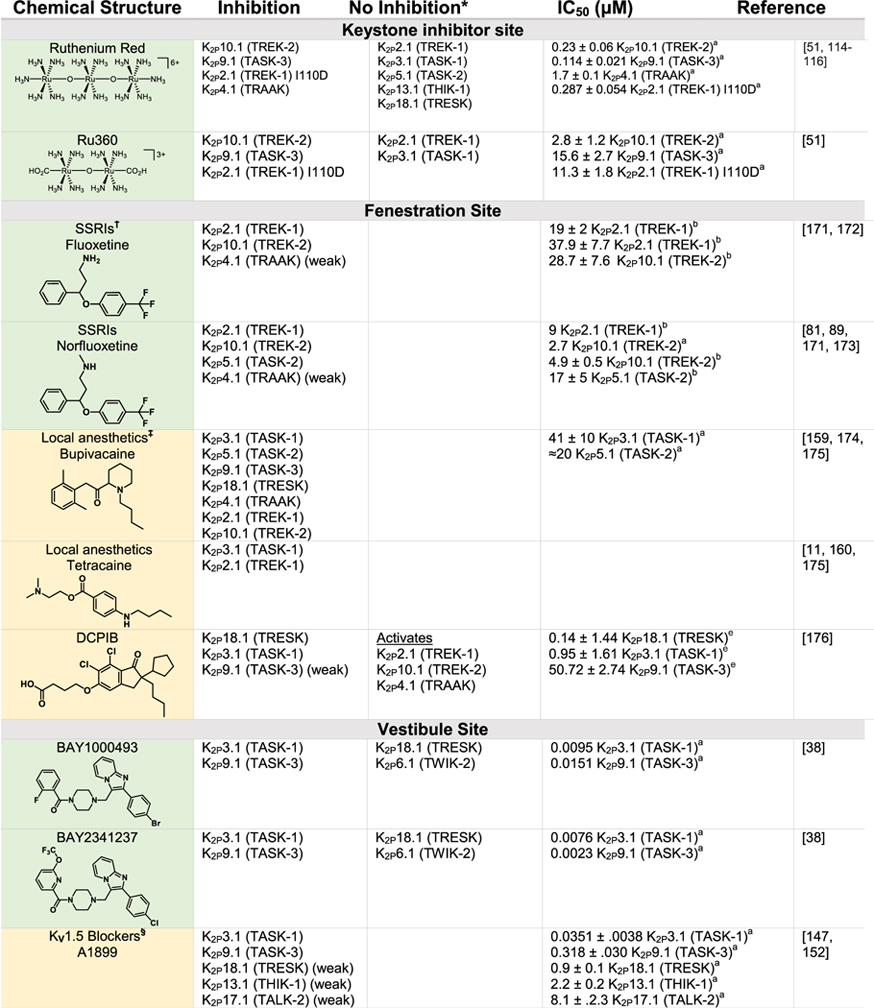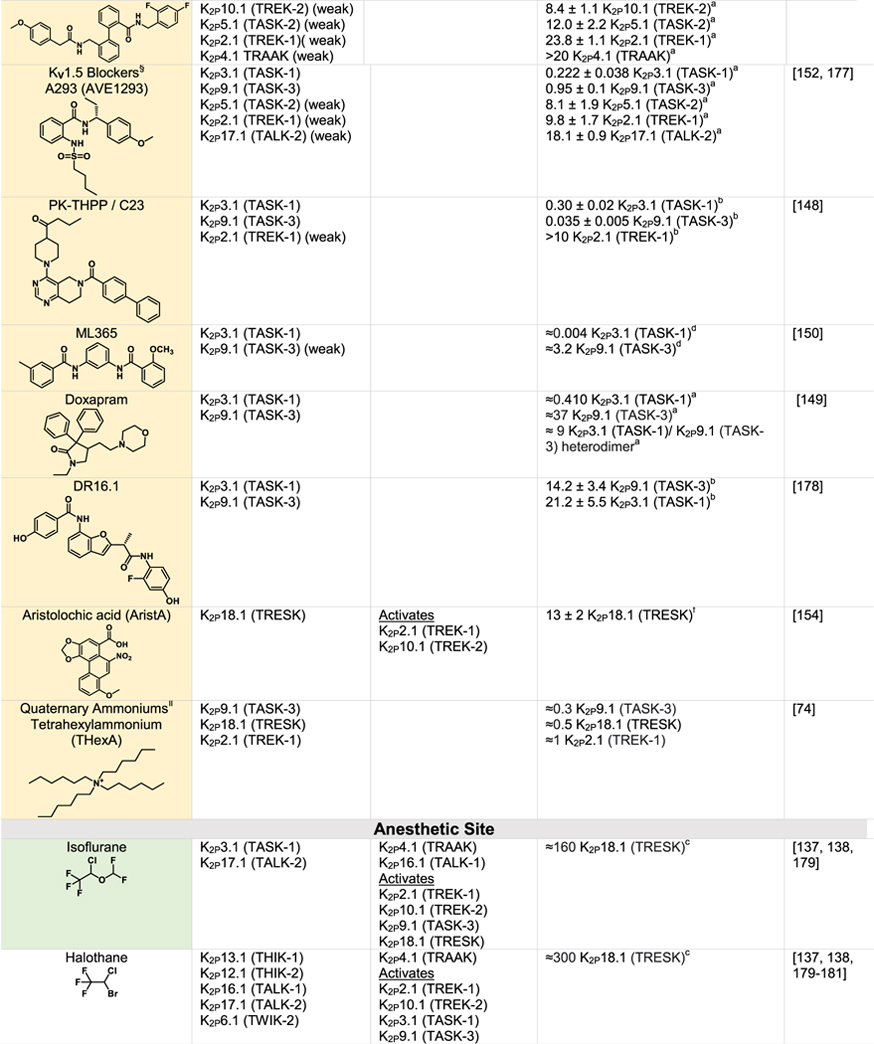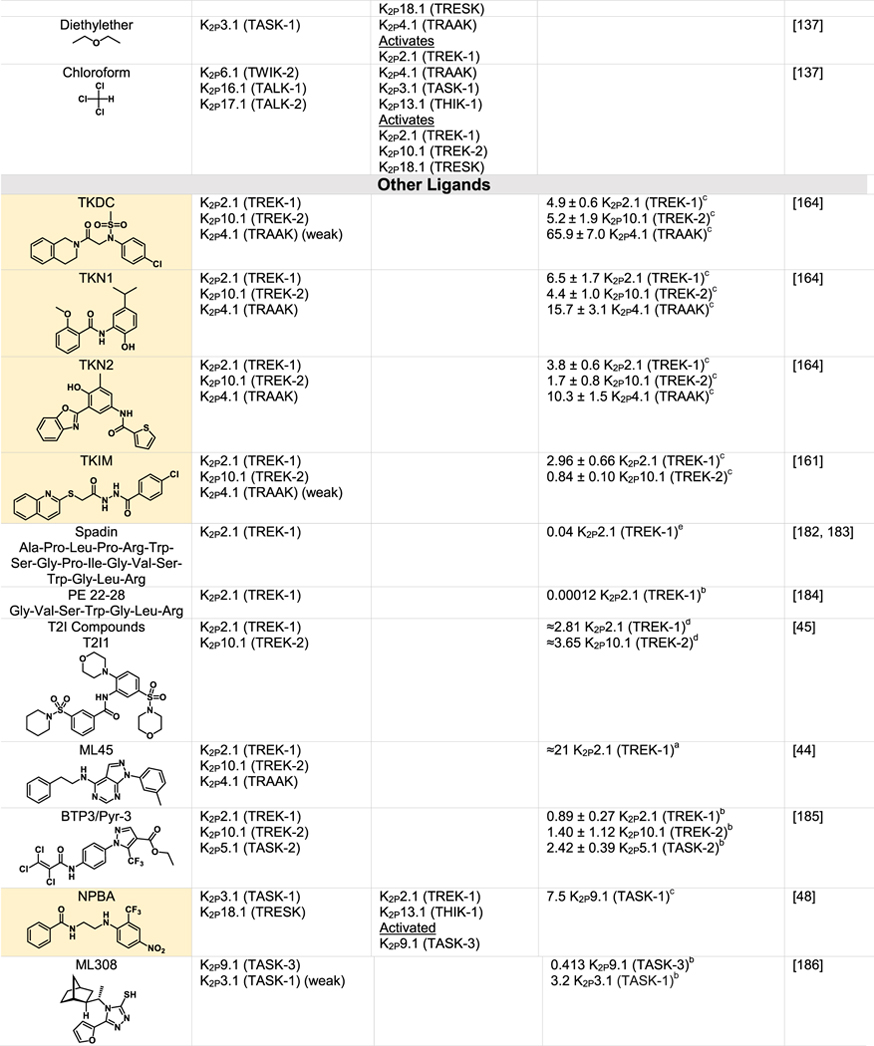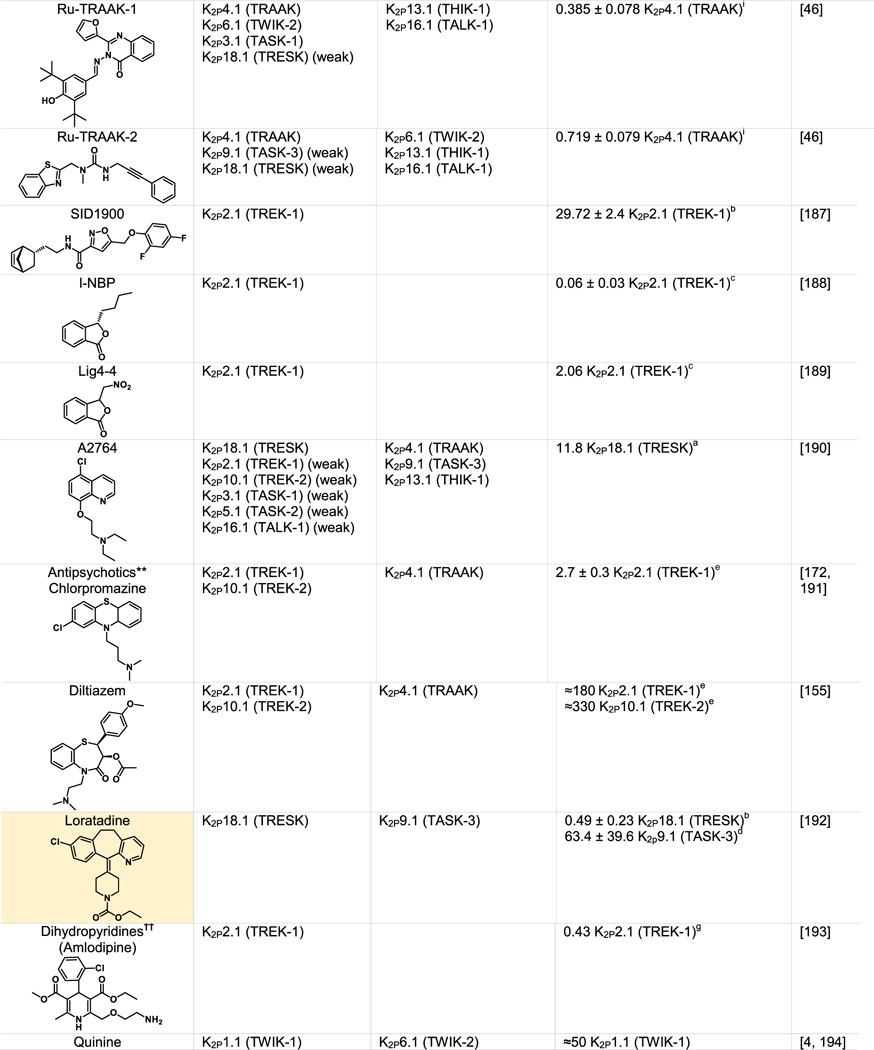Table 1.

|

|

|

|

|
Green indicates structurally validated inhibitors. Yellow indicates inhibitors supported by mutagenesis or mutagenesis combined with simulation studies. Cells used to measure activity are indicated as follows:
Oocytes,
HEK cells,
CHO Cells,
Thallium flux assay,
COS-7 cells,
tsA201 cells, AZF cells,
hippocampal pyramidal neurons,
Lysosome flux assay.
Only K2Ps tested against the inhibitor are listed.
Other SSRIs such as citalopram and paroxetine inhibit K2Ps and likely bind to the fenestration site.
Other structurally similar local anesthetics such as lidocaine, ropivacaine, mepivacaine and etidocaine likely bind K2Ps similarly to bupivacaine.
Many KV1.5 blockers have been identified as being more potent antagonists for TASK channels. In addition to A1899 and A293, ICAGEN-4, MSD-D and A1899 derivatives have all been shown to potently inhibit TASK channels.
K2Ps are traditionally insensitive to quaternary ammoniums applied extracellularly, however are sensitive to intracellular application. Quaternary ammoniums with longer alkyl chains inhibit K2Ps more strongly than those with short alkyl chains.
Both typical antipsychotics and atypical antipsychotics (fluphenazine, haloperidol, loxapine, clozapine, etc.) have been shown to modulate K2P channels.
Other dihydropyridines such as niguldipine and nifedipine antagonize TREK channels.
